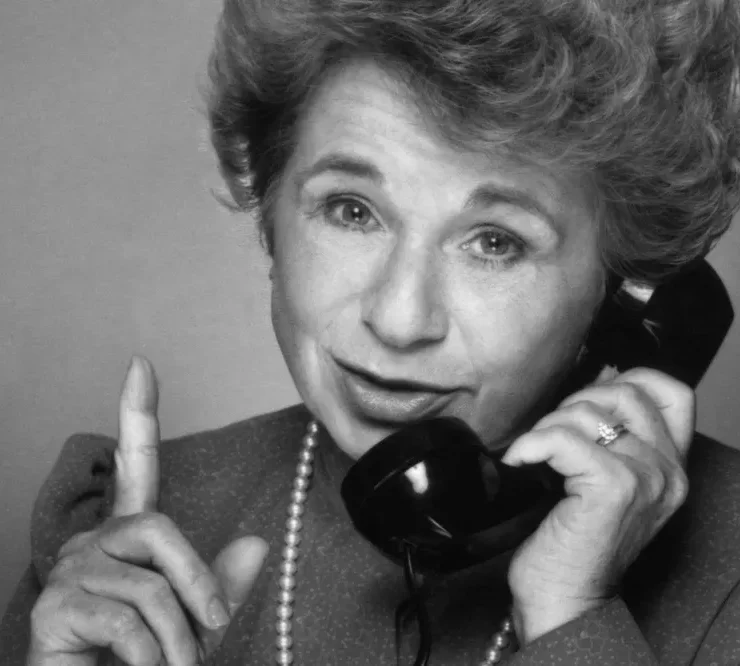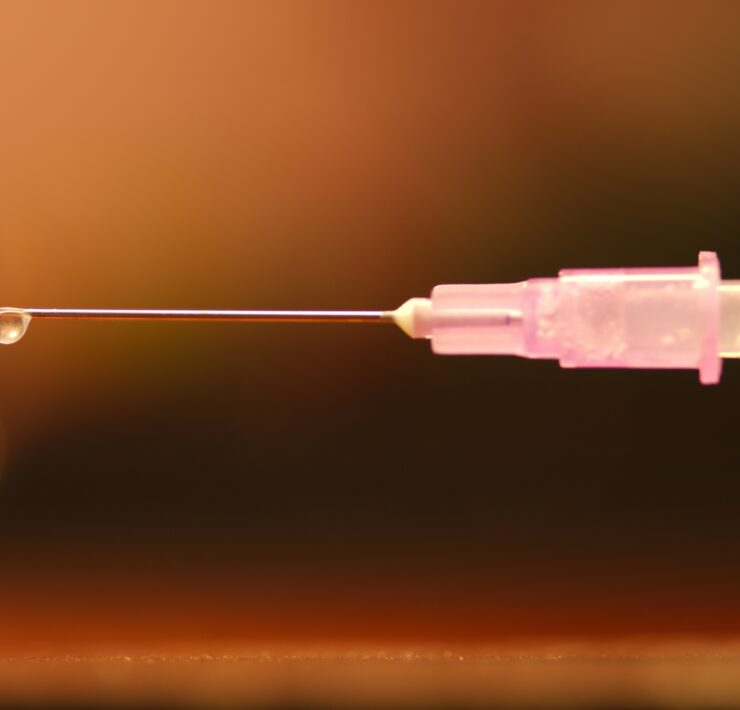Outlook has improved, but challenges still ahead for HIV survivors

Matthew Pizzuti Out Front Colorado's former managing editor.
When Larry Bankston found out he had HIV, he didn’t even know he’d been tested.
Bankston, 13-years-old in the mid 1980s, had been running away from an abusive home when he was brutally sexually assaulted by an older man, in Cheesman Park.

Weeks after being admitted to Denver General Hospital – now called Denver Health – he was brought to a small, solemn room of seated hospital employees.
Some had tears streaming down their faces, he recalled.
“They said I had this illness,” Bankston said. It was a disease he’d never heard of. “I asked when I would get better. And they really started boo-hooing, and said I wouldn’t.”
Bankston never went back to his grandmother’s home in east Denver after that – he never even heard from his family, he said, after they learned of his HIV status.
He became a ward of the state – a system that misunderstood HIV. Bankston was placed at Fort Logan Psychiatric Hospital where he lived almost two years, under quarantine.
“They would house me in a room by myself because they didn’t want me around other people,” Bankston said. Caretakers hung a “Blood and Bodily Fluid Precaution” sign on his door, and doctors always wore gloves and masks to see him.
“The system at the time hadn’t dealt with children who were positive,” Bankston said. “In hindsight, they didn’t understand. But I didn’t understand what they were doing to me. All it did was breed anger in me.”
Through his teenage years, Bankston was moved from one facility to another – including Denver Children’s Home and Bannock Shelter. He never entered foster care. Nobody wanted to house him because he had HIV, he said.
Bankston vented his frustration during the few times he escaped.
“I became promiscuous – not to explore, but because I was angry,” he said. “I don’t know if there’s any person I was responsible for making positive. I might have been angry and I might have been a child, but I don’t think that excuses what I was doing,” he said, in putting others at risk.
“I wanted to exact my revenge one person at a time.”
A few kind nurses – he recalls them by name: Connie, Diane and Matilda – made up some of the few good memories from his youth.
They didn’t treat him “like a leper” the way others did, he said; they didn’t wear gloves to draw his blood.
Little things meant a lot, he said.
They, along with Denver’s gay nightlife – bars like The Grove, Stars and the original Tracks – were his refuge through his later teenage years, and the gay community remained central through his 20s after he left state custody.
“I immersed myself in the gay lifestyle,” he said.
Though Bankston was disclosing his HIV-status to sexual partners by then, he never told anyone else, worried that “the wrong person” might hurt him. He said his interview with Out Front Colorado is the first time he’s been this open.
Through the years in which hundreds of thousands of Americans were dying of AIDS, Bankston lived. He still doesn’t know why his body kept the virus in check without medication, but he was always preparing to die. He’s been hospitalized for mysterious illnesses – heart problems, lung problems and a reoccurring, undiagnosable infection in his eye he said could have been HIV-related; the doctors didn’t know.
He used drugs, and attempted suicide more than once.
“I got sick and tired of wondering if every cough or sneeze was the precursor to the end of my life,” he said.
After a close friend in a hospital wasted away with AIDS, Bankston feared facing the same slow death.
He went to New York to kill himself, in the big city so that his death could be anonymous.
But there he suddenly developed pneumonia, and was hospitalized and sent back to Colorado. That health crisis may have saved his life.
“I have not been kind to my body,” Bankston said.
Bankston’s experiences are shocking given what we now know about HIV and AIDS. It was indicative of the terror, shame and tragedy that characterized the early years of the HIV crisis.
Scientific understanding of HIV has improved drastically since Bankston was isolated and told he wouldn’t live to see 17.
Medical professionals have a clearer picture of the virus and its progression, have developed medications to keep it in check and understand what puts a person at risk.
Even more importantly, they understand what’s “safe.”
For example, doctors know that casual contact carries no risk, that proper condom use lowers risk of infection, and that even romance between an HIV-positive person and an HIV-negative person – a “serodiscordant relationship” – is possible.
HIV experts provide support to those relationships, offering council and scientific knowledge that gives the couple a great number of sexual options, while keeping the HIV-negative partner’s risk of infection very low.
“I’ve seen plenty of those positive relationships,” said Dr. Ben Young, Medical Director at Rocky Mountain CARES clinic in Denver. “Do I discourage it? Absolutely not. I think it’s entirely doable.”
But the general public isn’t to that point, said Ron Dorcheimer, of Denver, who has been living with HIV since he was 28.
***
In a small clinic on Colfax in 1994, Ron Dorcheimer’s suspicions that he had HIV were confirmed when he was called in for test results he’d prepared himself to hear.
“I pretty much knew,” he said, citing a risky lifestyle – as well as his intuition. Though he wasn’t sick, he’d noticed “a change” in his body.
His reason for getting tested, he said, was so he could properly inform partners.
“I never looked at it like a lot of people do, as a death sentence,” he said. “I believe you get what you put out. I never said ‘oh my god I’m gonna die.’”
For two years, Dorcheimer let the news settle. Then he got a doctor and started taking a new drug called Crixivan, as well as AZT. He said there were no side effects, and he credits his positive attitude for continued good health.
It was right about then that new drugs began to drastically change outcomes for people living with HIV and AIDS.
Dorcheimer has remained optimistic. Recently, he met an HIV-negative man in Reno, with whom a romance quickly emerged.
Dorcheimer said that his partner, Dominik, is unfazed by Dorcheimer’s status and just moved to Denver to begin their relationship.
“We know what we’re doing, we’re careful,” he said. “Just gotta wrap that puppy and use common sense,” he said with a chuckle.
But Dorcheimer still sees ignorance in the world, even among gay men in the U.S. where HIV rates are highest. He isn’t one to complain about his life, but was willing to share some of the ongoing stigma people with HIV encounter.
Before meeting Dominik, Dorcheimer searched hookup websites for sexual partners and came across many men who were open to the riskiest behaviors – including unprotected anal sex – just so long as their partners didn’t post “HIV-positive” in their profiles.
“Profiles would say they’re looking for bareback sex,” he said. “People say they wouldn’t play with me, even with a condom. Yet they’ll bareback with people who don’t know their status or may lie to them.”
People who don’t know their HIV status – or even those who recently tested negative – can still be HIV-positive. They could have been infected after the test, or may not have yet developed the antibodies that the test looks for at the time it was taken. Yet, if infected, they can still pass HIV on, and because their immune systems are not yet countering the infection with antibodies, they are actually far more infectious in those first weeks.
“People who are recently infected, particularly those who do not know their status, are disproportionately responsible for new HIV infections,” Young said. “They may be as much as 10 to 50 times more infectious than someone who is chronically infected.”
Chronic infection is a stage a newly-infected person will reach in 2-3 months.
There are also challenges finding lasting relationships, Dorcheimer said.
“There are too many people who say they won’t have a relationship with an HIV-positive person,” he said. “They say they wont ‘risk it,’ but they risk it every day when they have sex.”
There’s another issue that arises – often unspoken – when it comes to HIV: “where did it come from?” For those just diagnosed, the question can arise with shock and grief; for those who are HIV-negative, they might be hoping to determine their own risk by judging others’ experiences.
But Dorcheimer says there’s no point in knowing that.
“Many people would like to know who they got HIV from,” he said. “I don’t know, and I don’t care. I think if someone does know where they got it from, that’s a huge burden. There’s so much anger that comes up.”
But anger can’t change HIV-status, and the surest way to prevent oneself from infection is to assume any sexual partner is potentially HIV-positive and use appropriate precautions. Subjective judgments about a person just don’t reduce risk.
Young said they can “get in the way of intellectual thought and mindful discussion.”
“My council to patients is, it’s great to trust your partner, but one can be proactive, and a bit selfish in a way, to protect your health. Don’t leave it to the hands of God or the hands of a partner,” Young said.
Dorcheimer emphasized every person’s responsibility to protect against HIV.
“Even if it’s a bareback situation and they didn’t tell you [they were HIV-positive], you still allowed it,” Dorcheimer said.
Dorcheimer says he’s “safe” all the time, in any situation. But others may not be as careful if they don’t know they’re infected.
He says that though people may judge him for his HIV-status, he doesn’t care what people think.
“There are too many people who are against HIV-positive people or don’t know much about it, which is sad considering how far into it we are,” Dorcheimer said. “In the gay community itself, people should be more accepting of each other.”
But, he added, “if they want to judge me for that, that’s their issue, not mine.”
It’s an attitude that helps HIV-positive people cope with stigma, one of the remaining issues associated with a disease that is increasingly under control.
“I believe fully that people with HIV can and should live as though they didn’t have HIV; it shouldn’t affect quantity of life, and quality of life,” Dr. Young said.
***
Bankston, too, has turned a corner in his outlook.
Bankston is now 39. He has been clean and sober for two years now, which is a top priority in his life, followed by his spiritual and emotional health, he said.
“Twenty-seven years (the time he’s been positive) is a long time to sit back and watch what the world does,” he said. “Maybe it made me just a little bit of a better person, not just aware of myself, but of other people, and taking their health into consideration.”
He’s also just recently started taking HIV-suppressing meds; he takes a pill once a day, and experiences no side-effects.
It’s the first time in his life he’s starting to think about something that so many others take for granted: a future.
“Lately I’ve been thinking, I’ve never thrown myself a birthday party, but 40 is a big year,” he said.
He turns the big 4-0 Oct. 24.
What's Your Reaction?
Matthew Pizzuti Out Front Colorado's former managing editor.










